NavSource Online: Aircraft Carrier Photo Archive
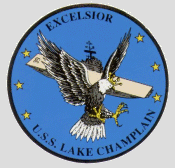 Courtesy of CAPT Gene Oleson, CHC, USN (Ret) |
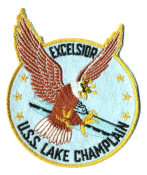 Courtesy of Mike Smolinski |
USS LAKE CHAMPLAIN (CV-39)
(later CVA-39 and CVS-39)
| Click On Image For Full Size Image |
Size | Image Description | Contributed By And/Or Copyright |
|
|---|---|---|---|---|
| As CVS-39 (1957 — 1966) |
||||
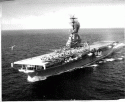 NS023980 |
49k | Operating with VS-27 Squadron, 1957–1959. |
ASC Arch D. Vaughn, USN (Ret) | |
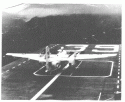 NS023981 |
72k | |||
 NS023982 |
36k | |||
 NS0239ae |
203k | Sikorsky HSS-1 Seabats of HSS-5 "Nightdippers" and Grumman S2F-1 Trackers of VS-36 "Gray Wolves" on the flight deck of USS Lake Champlain (CVS-39). Note the tidied up appearance of the island structure and the deletion of the flight deck 5"/38 mounts. Photo was probably taken during local operations in the Atlantic, February–March 1958. |
Robert Hurst | |
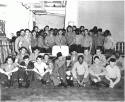 NS023922 |
112k | Med Cruise 1958. 100th Destroyer Refueling. |
- | |
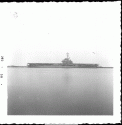 NS023923 |
43k | Mayport, Florida, December 1958. |
- | |
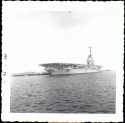 NS023924 |
62k | Mayport, Florida, December 1958. |
- | |
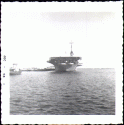 NS023925 |
66k | Mayport, Florida, December 1958. |
- | |
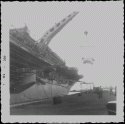 NS023926 |
52k | Changing homeport from Mayport, Fla. to Quonset Point, R.I. in 1958. Loading of service personnel's cars onto Lake Champlain in prep for the trip. |
- | |
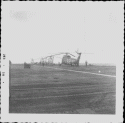 NS023927 |
49k | HSS-1 Seabat helicopters, squadron HS-3 "Tridents." Photo developed in December 1958, but most likely taken in November. |
- | |
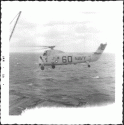 NS023928 |
60k | HSS-1 Seabat, modex HB60, squadron HS-3 "Tridents." Photo developed in January 1959, but most likely taken in November 1958. |
- | |
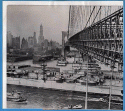 NS0239ak |
54k | "WHEW!—Looks as if aircraft carrier Lake Champlain is going to take Brooklyn Bridge along for a ride as flattop sails up East River on way to overhaul. But ship actually had 11 feet to spare under bridge. That's lower Manhattan skyline in background." Associated Press Wirephoto, 11 December 1958. |
Tommy Trampp | |
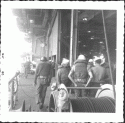 NS023929 |
79k | May 1960. |
- | |
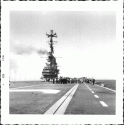 NS023932 |
64k | May 1960. |
- | |
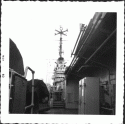 NS023933 |
62k | May 1960. |
- | |
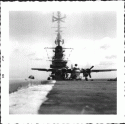 NS023934 |
63k | May 1960. |
- | |
 NS023902 |
113k | Undated, port bow view. | USN | |
 NS023946 |
27k | Grumman Tracker (S2F or S-2), late 1950s-early 1960s. | Harry Wood, ADJ3, USS Lake Champlain | |
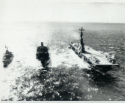 NS0239ah |
154k | USS Marias (AO-57), center, refueling USS Blandy (DD-943), left, and USS Lake Champlain (CVS-39). |
Ron Reeves | |
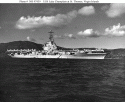 NS023916 |
98k | USS Lake Champlain (CVS-39) anchored at St. Thomas, Virgin Islands, while making a liberty call after exhaustive anti-submarine warfare exercises in the Caribbean. Presence of Sikorski HSS/SH-34 helicopters on her flight deck indicates that the photo was taken during the early 1960s. The original print was received by "All Hands" magazine on 23 April 1965. Official U.S. Navy Photograph, from the collections of the Naval Historical Center (# NH 97439). |
NHC | |
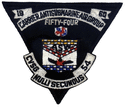 NS0239bb |
102k | Antisubmarine Carrier Air Group (CVSG) 54 was established on 18 May 1960 and was teamed with USS Lake Champlain (CVS-39) until September 1965. |
- | |
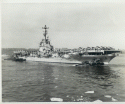 NS0239ai |
168k | USS Lake Champlain (CVS-39), with Antisubmarine Carrier Air Group (CVSG) 54, Quonset Point, RI, 1960. |
Ron Reeves | |
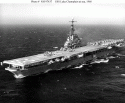 NS023914 |
85k | USS Lake Champlain (CVS-39) underway at sea. The original print bears the rubber stamp date 1 July 1960. Official U.S. Navy Photograph, from the collections of the Naval Historical Center (# NH 97437). |
NHC | |
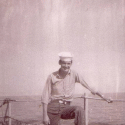 NS0239bk |
21k | Richard A. Nelson served aboard USS Lake Champlain (CVS-39) as a sonar tech during the Cuban Missile Crisis, Mercury and Gemini 5 capsule recoveries, and Atlantic anti-sub training program. This is a photo of him, taken on deck in 1960. |
Jean Nelson, daughter of Richard A. Nelson | |
| Mercury-Redstone 3 (Freedom 7) Recovery |
||||
 NS023983b |
153k | On May 5, 1961, CDR Alan B. Shepard Jr. became the first American to fly into space. His Freedom 7 "Mercury" capsule was launched suborbitally to an altitude of over 116 miles, 303 statute miles down range from Cape Canaveral. After a 15.5-minute flight, the spacecraft splashed down in the Atlantic Ocean where USS Lake Champlain (CVS-39) awaited its arrival. The capsule came through the entire flight in such excellent shape that the engineers who examined it decided that it could easily be used again. The doctors also assessed that the astronaut was in excellent shape, physically and psychologically and "...could be used again too." NS023983h: HSS-1N Seabat helicopter from Helicopter Anti-submarine Squadron (HS) 5 "Nightdippers." |
Robert Schaneen Corrected (color and orientation) copies submitted by Bob Fish, Trustee - USS Hornet Museum |
|
 NS023983c |
143k | |||
 NS023983d |
148k | |||
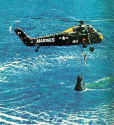 NS023983m |
248k | Bob Fish, Trustee - USS Hornet Museum |
||
 NS023983l |
504k | |||
 NS023983e |
197k | Robert Schaneen Larger copy submitted by Bob Fish, Trustee - USS Hornet Museum |
||
 NS023983f |
79k | Robert Schaneen | ||
 NS023983g |
45k | |||
 NS023983h |
91k | |||
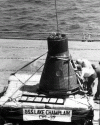 NS023983 |
250k | Photos © Robert D. Serpan | ||
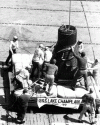 NS023983a |
266k | |||
 NS023983k |
130k | Astronaut Alan B. Shepard on the deck of USS Lake Champlain (CVS-39) after the recovery of his Mercury capsule in the western Atlantic Ocean, 5 May 1961. Shepard and the Mercury spacecraft, designated Freedom 7, were flown to the deck of the recovery ship within 11 minutes of splashdown. The spacecraft attained a maximum speed of 5,134 miles per hour, reached an altitude of 116.5 statute miles, and landed 303 statute miles downrange from Cape Canaveral, Florida (27° 13.7' N, 75° 53' W). The suborbital mission lasted 15 minutes and 28 seconds. Photo courtesy of the NASA Marshall Space Flight Center Collection (# S61-02727). |
Bill Gonyo | |
 NS023983i |
87k | "Photograph from NASA of Mercury-Redstone 3 as astronaut Alan Shepard walks across the deck of the aircraft carrier USS Lake Champlain. Shepard was the first American in space on this mission." "America's first astronaut Alan Shepard aboard the carrier U.S.S. Lake Champlain May 5th, 1961. After pickup and recovery of the astronaut and his space capsule you can see it is not much bigger than he is. These pictures were taken by the ship's photographer." |
Tommy Trampp | |
 NS023983j |
162k | National Aeronautics and Space Administration (NASA) | ||
 NS0239bh |
1.03M | "Latest Sub Hunter. The U.S. Navy's twin-turbine Sikorsky HSS-2, the world's most advanced helicopter weapons system, hovers near USS Decatur (DD-936) during the aircraft's recent carrier suitability trials. The aircraft carrier, USS Lake Champlain (CVS-39), and another destroyer are in the background. The HSS-2 is scheduled to go into fleet service later this year as a submarine hunter-killer." Photograph released 17 May 1961. National Museum of the US Navy (NMUSN) photo, # 330-PSA-103-61 (USN 710896). |
NMUSN | |
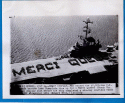 NS0239al |
118k | "QUEBEC, JULY 14[, 1961]—SMART DISPLAY—Men aboard the 42,000-ton U.S. aircraft carrier Lake Champlain line up for a Merci Quebec (Thank You Quebec) display just before the ship completed a six-day courtesy visit to Quebec. (CP Wirephoto) 1961 (Edward Bros.) ljcll40p" |
Tommy Trampp | |
 NS023947 |
746k | Underway replenishment with USS Severn (AO-61) and USS Forrest Sherman (DD-931), probably taken in the North Atlantic in 1961. Air Group is CVSG-54, tail code "AT." (Digitally enhanced by Tom Kermen.) |
Harry Wood, ADJ3, USS Lake Champlain | |
 NS023947a |
106k | As above. Note Forrest Sherman's three 5" guns trained forward. | Image courtesy of Larry Blumenthal, PH3, 1957-61. "US Navy Photos" |
|
 NS023904 |
99k | South Boston, July 1961. | © Richard Leonhardt | |
 NS023904a |
92k | South Boston Naval Annex, July 1961. | ©Richard Leonhardt | |
 NS023903 |
68k | South Boston Naval Annex, August 1961. | ©Richard Leonhardt | |
 NS0547128 |
303k | USS Beale (DDE-471) and USS Lake Champlain (CVS-39) serenade each other during refueling, 28 August 1961. |
Ed Zajkowski | |
 NS023921 |
130k | An aerial view of Lake Champlain (CVS-39), 29 August 1961 (photo # USN-1077581). |
Naval History & Heritage Command | |
 NS023921a |
227k | As above. Aircraft on deck are S2F-1 and -1S Trackers from VS-22 "Checkmates," AD-5W Skyraiders from VAW-12 "Bats" and VAW-33 "Night Hawks," a single HUP-2 Retriever from HU-2 "Fleet Angels," and HSS-1N Seabats from HS-5 "Nightdippers." |
Mike Donegan | |
 NS0565507 |
44k | USS John Hood (DD-655) being refueled in December 1961 alongside USS Lake Champlain (CVS-39). |
Bill Gonyo | |
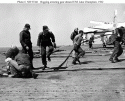 NS023918 |
117k | Members of the carrier's V-2 Division rigging arresting gear on the flight deck, circa 1962. The caption released with this photo on 24 July 1962 reads: "Speeding toward a record-breaker, V-2 divisionmen aboard the USS Lake Champlain show what it takes to come out on top in barrier rigging. The 'Champ' crew recently broke the Atlantic Fleet record for setting the Davis (S2F) barrier with a time of 59 seconds flat. Having gained momentum, they went on to rig the conventional (AD) barrier in a pace-setting 53 seconds. When the men slowed down enough to look in the record books, they quickly found out that the record they had broken was their own, set in July of '61." Official U.S. Navy Photograph, from the collections of the Naval Historical Center (# NH 97441). |
NHC | |
 NS023906 |
258k | April 1962 "Cats & Traps" USS Lake Champlain (CVS-39) as viewed from USS Norris (DD-859) during "Plane Guard" duty, for ASW operation training. |
©David Cupples. (MM2 1960-1964) |
|
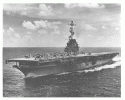 NS023905 |
195k | Official U.S. Navy photograph of USS Lake Champlain (CVS-39), somewhere in the Atlantic during her deployment of June–August 1962. The Air Group embarked was CVSG-54, Tailcode "AT". (Digitally enhanced by Tom Kermen.) |
Robert M. Cieri | |
 NS0239ad |
70k | Anchored at St. Thomas, Virgin Islands, November 1962, with Antisubmarine Carrier Air Group (CVSG) 54. |
Daniel Showalter | |
 NS0239ada |
115k | |||
 NS0239adb |
116k | |||
 NS023900 |
191k | New York City, February 1963 (thanks to Harry Wood, ADJ3, 1962–64). |
Wilbur James Jenkins, Jr., USS Lake Champlain. Submitted by his daughter, Penny Lowrey. |
|
 NS023900a |
179k | |||
 NS023948 |
31k | Boston, April 1963. | Harry Wood, ADJ3, USS Lake Champlain | |
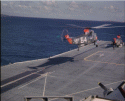 NS023949 |
30k | Sikorsky SH-3A Sea King, St. Thomas, circa 1963. | Harry Wood, ADJ3, USS Lake Champlain | |
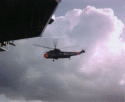 NS023950 |
17k | Sikorsky SH-3A Sea King, St. Thomas, circa 1963. | Harry Wood, ADJ3, USS Lake Champlain | |
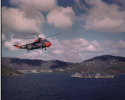 NS023951 |
25k | Sikorsky SH-3A Sea King, St. Thomas, circa 1963. | Harry Wood, ADJ3, USS Lake Champlain | |
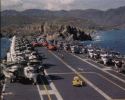 NS023952 |
41k | St. Thomas, circa 1963, with CVSG-54 aboard. | Harry Wood, ADJ3, USS Lake Champlain | |
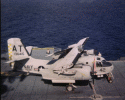 NS023953 |
36k | Grumman S-2 Tracker assigned to VS-32 "Norsemen." St. Thomas, circa 1963. | Harry Wood, ADJ3, USS Lake Champlain | |
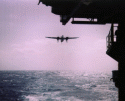 NS023954 |
26k | Grumman S-2 Tracker approaching for a landing, early 1960s. | Harry Wood, ADJ3, USS Lake Champlain | |
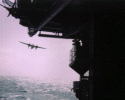 NS023955 |
19k | Grumman S-2 Tracker approaching for a landing, early 1960s. | Harry Wood, ADJ3, USS Lake Champlain | |
 NS023945 |
104k | Official U.S. Navy photograph from the photo lab aboard USS Lake Champlain (CVS-39). File Number #CVS-39-9541-8-63, dated 29 August 1963. It shows an EA-1E (AD-5W under the pre-1962 designation system) "Guppy" Skyraider of VAW-33 Det. 39 "Knight Hawks", preparing to launch from the starboard catapult. |
Original photo submitted by Harry Wood ADJ3, USS Lake Champlain Larger photo submitted by Robert M. Cieri |
|
 NS0239bf |
299k | USS Lake Champlain (CVS-39) underway circa 1963, with (l-to-r): USS Forrest Sherman (DD-931), an unidentified conventionally-powered submarine, USS Charles H. Roan (DD-853), USS Fred T. Berry (DD-858), and USS Harold J. Ellison (DD-864). US Navy photo. |
Via Yu Chu | |
 NS0239az |
467k | "Taken September 1963[?]. We departed Quonset Point for the day. Purpose was to demo ASW capabilities." Spotted on deck are Grumman S-2 Trackers from VS-22 "Checkmates" and VS-32 "Norsemen," Antisubmarine Carrier Air Group (CVSG) 54. |
Richard Segel. | |
 NS023910 |
887k | USS Decatur (DD-936) receives serious topside damage in a collision with USS Lake Champlain (CVS-39), after suffering a steering casualty and running under the carrier's bow overhang, 6 May 1964. Taken from the carrier's bridge. Note S-2 aircraft parked forward, and Decatur's mainmast breaking away. Halftone photograph copied from Decatur's 1968 Cruise Book, page 1. The book is in the Collections of the Navy Department Library. U.S. Naval History and Heritage Command (NH&HC) Photograph, # NH 98178. |
NH&HC | |
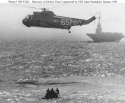 NS023919 |
83k | Gemini Titan 2 Suborbital Test, 19 January 1965 — "U.S.S. Lake Champlain — Navy frogmen place the floatation collar around the Gemini Titan 2 spacecraft. The National Aeronautics and Space Administration launched the spacecraft from Cape Kennedy, Jan. 19, 1965 at 9:03 and it was recovered by the recovery forces aboard the U.S.S. Lake Champlain some 2100 miles downrange at 10:45 a.m. Flight time was 19:03 minutes. Actual landing was 16 miles short of the programmed landing area." Quoted from the original caption released by NASA with this photograph. Lake Champlain (CVS-39) is in the background. One of her SH-3 helicopters is hovering over the spacecraft. National Aeronautics and Space Administration Photograph, from the collections of the Naval Historical Center. (# NH 97442). |
NHC | |
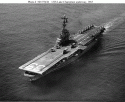 NS023915 |
123k | USS Lake Champlain (CVS-39) underway while conducting anti-submarine exercises in the western Atlantic, circa early 1965. The original print was received by "All Hands" magazine on 23 April 1965. Note flight deck markings on this ship, the last axial-deck fixed-wing aircraft carrier in U.S. Navy service. Official U.S. Navy Photograph, from the collections of the Naval Historical Center (# NH 97438). |
NHC | |
| Gemini 5 Recovery |
||||
 NS0239ap |
164k 2.61 M |
This picture was taken from USS Waldron (DD-699) as she was alongside the oiler (possibly USS Chipola [AO-63]) during the Gemini V recovery mission (late August 1965) with the Champ on the port side of the oiler. Ted comments: "The USS Waldron DD-699 was assigned as one of the Atlantic recovery vessels for the Gemini V recovery mission. The Waldron was equipped with a special crane to lift the capsule from the water and had a boilerplate mock-up of the capsule aboard. The mock-up was dropped over the side and the Waldron's deck team practiced the recovery evolution." "On the day of splashdown, the Waldron was about 50 to 60 miles away from the carrier (USS Lake Champlain). The Waldron's radar team (CIC = Combat Information Center) was the first to 'see' the astronauts after they passed through the atmospheric 'blackout' and clocked the Gemini capsule at 3,000 mph and in the next minute the atmosphere slowed the capsule to 1,500 mph. The capsule landed about 25 miles from the Waldron and about 50 miles from the Champlain. Waldron's CIC team vectored the Champ's helos to the splashdown site." "The Waldron was also the recovery mission stealth ship as the ship's orders were to not allow any Soviet vessel to recover any part of any component of the launch rockets. Although families and friends knew the Waldron was to be at sea on the recovery mission, when the TV news teams showed maps of the Atlantic and all the recovery ships, the Waldron was not shown as the Navy kept the ship's presence 'secret'. All were upset that the Waldron was not listed and calls to NOB Norfolk produced no information. The Waldron's 'stealth' orders were revealed after departure from Norfolk." "As I was the Comm Officer, I held the Recovery Mission Comm Plan and a list of plaintext of codes to be transmitted to Houston should the Waldron recover the capsule and the astronauts. (All ships had the same Comm Plan with the same codes). The recollection of the codes is as follows:"
"One more recovery note:" Each ship assigned to the Gemini recovery mission, and one must presume all other astronaut recovery missions, had another important ongoing task, besides steaming the ocean blue. Remember, there was no AIS system in the 60's & 70's." Each time a recovery vessel encountered another ship at sea, there was a prescribed set of steps to be performed. The Op Orders required that each recovery ship record the Latitude & Longitude of every sighting, the name of vessel encountered, its registry, the calculated speed direction (track) and then interrogate the ship as to its next port of call, etc." "This information was then relayed in a message to update a data base of 'all' ships sighted transiting the recovery areas (Atlantic & Pacific). If the capsule splashed down other than in an area proximate to US vessels, the data base would be analyzed with locations projected to deduce which commercial vessels were likely in the area where the capsule indeed splashed down. Attempts would be made to contact the identified vessels to assist in the recovery." |
Ted Tomaszewicz | |
 NS023999 |
38k | View of the island of USS Lake Champlain (CVS-39), August 1965 (Gemini 5 recovery operation.) |
Gerald Lombardo | |
 NS023985 |
575k | The Gemini 5 spacecraft is brought aboard USS Lake Champlain, the recovery ship, after a successful landing at the end of its mission, August 29, 1965. National Aeronautics and Space Administration (NASA) Photograph # S65-46630 (GRIN DataBase Number: GPN-2000-001343). |
NASA Enhanced and larger copy submitted by Bob Fish, Trustee - USS Hornet Museum |
|
 NS023985a |
38k | As above. |
Gerald Lombardo | |
 NS023986 |
175k | Astronauts Charles Conrad Jr. (left) and L. Gordon Cooper Jr. walk across the deck of USS Lake Champlain, the recovery aircraft carrier, following splashdown and recovery from the ocean, August 29, 1965 (Gemini 5). National Aeronautics and Space Administration (NASA) Photograph # S65-51442 (GRIN DataBase Number: GPN-2000-001494). |
NASA | |
 NS023987 |
63k | In 1966, when the USS Lake Champlain left Quonset Point for the Philadelphia Navy Yard for decommissioning, many of the crewmen had their cars transported on the Champ's flight deck, so they wouldn't have to make their way back to Rhode Island to collect them after getting to Philly. |
Paul Leibe, ICFA at the time | |
| Ex-USS Lake Champlain |
||||
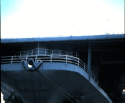 NS023984 |
79k | Ex-USS Lake Champlain (CVS-39) at Pier 2, Philadelphia Naval Shipyard. Photos taken by Joe Garrett on 20 May 1967, Armed Forces Day. In photo NS023984a note the bows of USS Leahy (DLG-16), temporarily decommissioned to undergo a major AAW modernization; and ex-USS J. Douglas Blackwood (DE-219). |
Joe Garrett, TMCM(SS), via Ron Reeves. | |
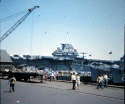 NS023984a |
208k | |||
 NS023989 |
178k | Philadelphia Naval Shipyard, May 1970. Official US Navy Photograph #1146926 by PHC Tommy Cobb. From the US Naval Photographic Center, Naval Station, Washington, DC. |
Robert M. Cieri | |
 NS0239as |
488k | Ex-USS Lake Champlain (CVS-39) towed to the shipbreakers, 1973. She had been stricken from the Navy List on 1 December 1969, and sold by the Defense Reutilization and Marketing Service (DRMS) for scrapping on 28 April 1972. |
Courtesy of Scott Koen & ussnewyork.com | |
|
||||
Comments, Suggestions or Image submissions, E-mail Carrier Information
Problems and site related matters, E-mail Webmaster
This page was created by Paul Yarnall and is maintained by Fabio Peña
![]()
Last update: 27 May 2023